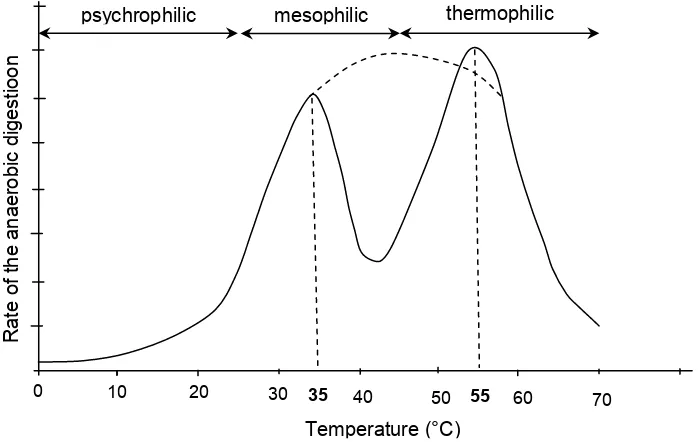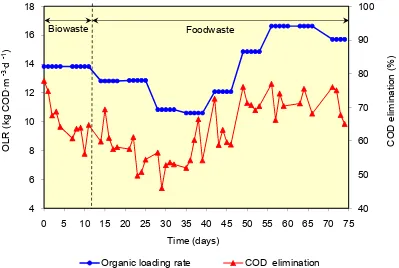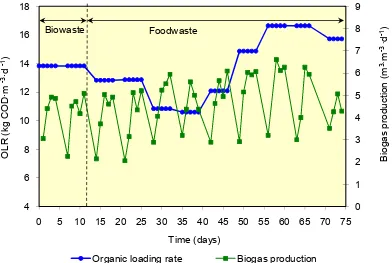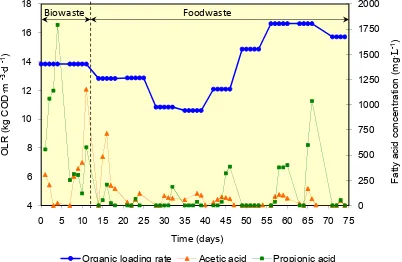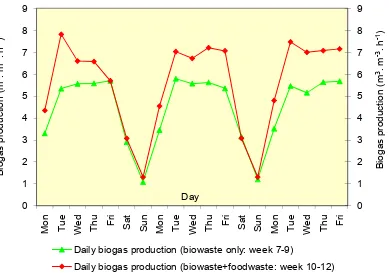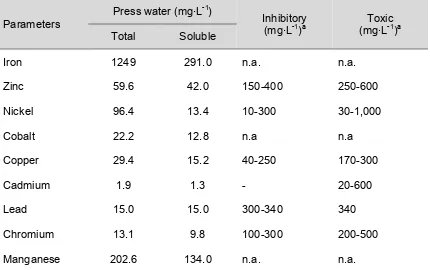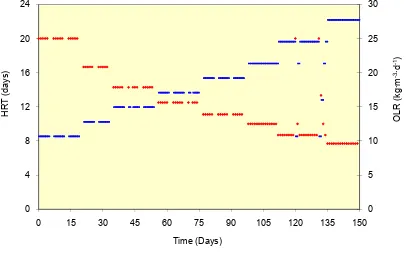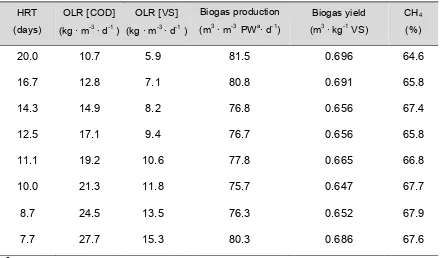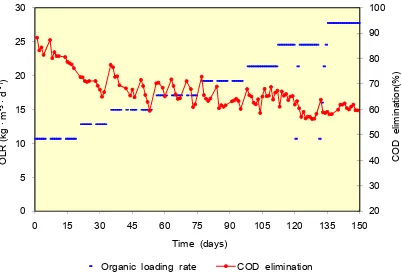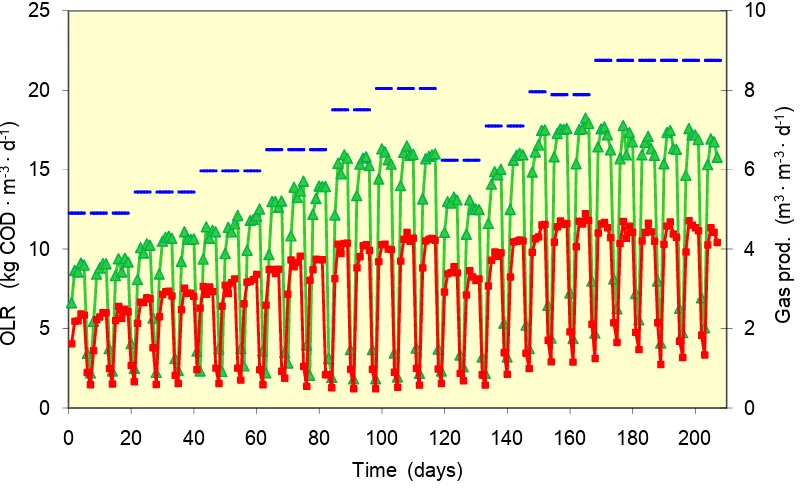zur Erlangung des akademischen Grades eines
DOKTOR INGENIEURS
von der Fakultät für
Bauingenieur , Geo und Umweltwissenschaften der Universität Fridericiana zu Karlsruhe (TH)
genehmigte
DISSERTATION
von
Satoto Endar Nayono, M.Eng., M.Sc. (Res. Eng.) aus Kulonprogo, Indonesien
Tag der mündlichen Prüfung : 11. Dezember 2009
Hauptreferent : Prof. Dr. rer. nat. Josef Winter
Korreferent : Prof. Dr.–Ing. E.h. Herman H. Hahn, Ph.D
Karlsruhe, Dezember 2009
The work presented in this doctoral dissertation was conducted at the
at Universität Karlsruhe (TH) from October 2005 to September 2009. This PhD study was financially supported by scholarship grants from the International Postgraduate Studies in Water Technologies (IPSWaT) organized by the International Bureau of the BMBF (
). The final year support was obtained from .
This dissertation presents the most important results of my doctoral work, which partly have been published or prepared as journal manuscripts. These manuscripts are:
1. Nayono, S.E., Gallert, C. and Winter, J., 2009. Foodwaste as a Co Substrate in a Fed Batch Anaerobic Biowaste Digester for Constant Biogas Supply.
Vol. 59 (6): 1169–1178, doi:10.2166/wst.2009.102 2. Nayono, S.E., Winter, J. and Gallert, C., 2009. Anaerobic Digestion of Pressed
Off Leachate from the Organic Fraction of Municipal Solid Waste. , doi:10.1016/j.wasman.2009.09.019
3. Nayono, S.E., Gallert, C. and Winter, J., 2009. Anaerobic Co Digestion of Biowaste with Press Water and Foodwaste for the Improvement of Biogas Production. (in preparation, to be submitted to )
First of all, I would like to express my special gratitude to my supervisor, Prof. Dr. rer.nat. Josef Winter, for his supervision, advice, and guidance from the very early stage of this study as well as giving me this very interesting topic of research. He also provided me encouragement and even non technical supports whenever necessary. I am indebted to him more than he knows. I gratefully acknowledge Prof. Dr. Ing. E.h. Hermann H. Hahn, Ph.D. for agreeing to be the ! of my dissertation. His lecture on sanitation technology during my master course in Resources Engineering inspired me to be further involved in the field of sanitation engineering. My special thanks go to Prof. Dr. sc. agr. Dieter Prinz for willing to be a member in the examination committee. Back to 2002, Professor Prinz gave me the possibility to enjoy the nice course in Resources Engineering and provided me a lot of support in various ways. I owe my sincere gratitude to PD Dr. rer. nat Claudia Gallert for her valuable hints and constructive comments on my work. From her I learned a lot of things related to laboratory work.
I would like to acknowledge Dr. Ulrike Schaub (former IPSWaT coordinator) and Hr. Achim Niessen ( " , Uni Karlsruhe) for honoring me with the scholarships. The financial support offered me a precious opportunity to broaden my knowledge and helped me to pursue my dreams in the future.
I was fortune to have worked with colleagues who were very supportive and created a pleasant working atmosphere. I am very thankful to Fr. Renate Anschütz who helped me in doing some laboratory analysis; to Fr. Rita Seith for helping me in administration matters and Daniel Jost for helping me improving the german abstract. My best thanks also go to all former and present colleagues at the
for their scientific support and friendship.
This work would not have been possible without the support and continuous prayer from my mother, parents in law, brothers and sisters. Last but not least, I would like to thank my beloved family. Innumerable encouragement and moral support from my wife Tanti Nayono and our joyful daughter Carla and son Hadrian are powerful sources of inspiration and energy. To them, this work is dedicated.
The total amount of municipal solid waste is continuously rising. Consequently, there are millions of tons of solid waste being produced every year which have to be safely disposed without any negative impact to the environment. On the other hand, as one of the driving forces for economic and social development the availability of energy in sufficient and sustainable amount has been becoming world’s main interest. However, depending on the way the energy is produced, distributed and used, it may contribute to environmental problems such as water, land and air pollution or even global climate change. Anaerobic digestion as a pre treatment prior to landfill disposal or composting offers several advantages, such as minimization of masses and volume, inactivation of biological and biochemical processes in order to avoid landfill gas and odor emissions, reduction of landfill settlements and energy production in the form of methane. Therefore, anaerobic digestion of bio degradable solid wastes can be considered an alternative option to improve the environment condition caused by organic solid waste and at the same time taking an advantage as an environmentally friendly resource of energy.
This study was carried out in order to evaluate the performance of anaerobic reactors treating OFMSW (organic fraction of municipal solid waste), especially in terms of its energy recovery, either by investigating the maximum organic loading rate or by co digestion with other types of wastes for energy recovery. In order to reach the research purpose, several experimental activities such as characteristics examination of different organic solid wastes, which are potential substrates for anaerobic digestion and performance evaluation of the anaerobic reactors treating OFMSW were initiated. The Except for source sorted OFMSW (later called biowaste), the substrates examined in this study were pressing leachate from an OFMSW composting plant (press water), source sorted foodwaste (foodwaste), and excess sludge from a potato industry wastewater treatment plant (potato sludge).
to biogas production during biowaste only feed periods during the day and no feeding during the night. The COD elimination efficiency of the reactor reached the same level as in biowaste only feed periods (51–65 %). The volatile solids elimination efficiency was between 62 – 65 %, which was insignificantly less compared to the volatile solids elimination during biowaste only feed periods (63 – 68 %).
As a sole substrate, press water could be fed to an anaerobic digester up to a maximum OLR of 27.7 kg CODHm3Hd1. During the digestion, a stable elimination of organic material (measured as COD elimination) of approximately 60 % was achieved with a maximum biogas production of 7.1 m3Hm3reactorHd1. Considering the optimum VS elimination, the COD removal efficiency, the problem caused by formation of massive foam at higher OLR and a reserve capacity for an increased amount of press water in the future, it is suggested that anaerobic digestion of press water should be operated at an OLR within the range of 13.5 to 22.5 kg CODHm3Hd1. A net surplus energy of about 10.8 kWh may be obtained from each ton OFMSW delivered when an anaerobic digester for press water is operated at an OLR of 21.3 kg CODHm3Hd1 (HRT: 10 days). The results of anaerobic co digestion of biowaste with press water or foodwaste showed that the addition of these co substrates not only linearly increased biogas pro duction but also improved the biogas production rates. An increase of the OLR by 10.9 % during co digestion with press water for instance, increased the biogas production as much as 18.3 % (the biogas production rate improved by 7.3 % compared to the OLR by biowaste suspension only). The addition of press water or foodwaste as a co substrate also resulted in significant increase of the digestate’s buffer capacity, which enables the operation of anaerobic digestion without an additional pH control system. Considering several factors, the optimum addition of press water and foodwaste is suggested at 15–20 % and 10–15 % by volume, respectively.
Potato sludge has a relatively high organic matter content. The volatile solids content of the sludge reached about 22 % of the total weight. It had a maximum methane production of around 0.40 m3 CH
Das Gesamtvolumen von kommunalen und industriellen Abfällen ist kontinuierlich steigend. Millionen Tonnen Abfälle werden jährlich produziert, die ohne negative Auswirkungen auf die Umwelt entsorgt werden müssen. Auf der anderen Seite ist die Verfügbarkeit von Energie in ausreichender und nachhaltiger Menge ein globales Interesse. Allerdings, je nachdem wie die Energie produziert, verteilt und verwendet wird, kann es zu Umweltproblemen wie Wasser , Boden und Luftverschmutzung oder sogar zu globalem Klimawandel führen. Eine anaerobe Vergärung von Biomüll als Vorbehandlung vor der Deponierung oder Kompostierung der organischen Fraktion bietet mehrere Vorteile, z.B. die Minimierung von Massen und Volumen, die Vermeidung von Deponiegas und Geruchsemissionen, die Reduzierung von Reaktionen nach Stabilisierung und die Methangewinnung für Energieproduktion. Daher kann die anaerobe Vergärung von biologisch abbaubaren Abfällen zur Verbesserung der Umwelt beitragen und gleichzeitig das entstehende Methan als umweltfreundliche Energieressource dienen.
Diese Studie wurde durchgeführt, um die Leistung der anaeroben Vergärung von
# (Engl.: $ % organische Fraktion der
Kommunalabfälle) zu charakterisieren. Die Studie konzentriert sich auf die Biogasproduktion von Abfällen, entweder durch die Untersuchung der maximal möglichen organischen Belastung oder durch die Co Vergärung mit anderen Arten von Abfällen. Die Substrate in dieser Studie waren: Getrennt gesammelter Bioabfall (später genannt), Sickerwasser aus der # einer Kompostierungsanlage
(& ), getrennt gesammelte Speisereste ( ) und Überschuss
schlamm aus einer Kläranlage der Kartoffelindustrie (& ).
Als einziges Substrat für einen anaeroben Bioreaktor konnte & bis zu einer maximalen OLR von 27,7 kg COD Hm3 d1 gefüttert werden. Während der Vergärung wurde eine stabile Elimination von organischem Material von ca. 60 % (als CSB gemessen) mit einer maximalen Biogasproduktion von 7,1 m3m3d1 erreicht. In Anbetracht der optimalen VS Elimination, der CSB Abbau Effizienz, der Probleme durch die Bildung von massivem Schaum bei höheren OLRs und der Notwendigkeit einer Reservekapazität für eine erhöhte zukünftige Menge von & , wird vorgeschlagen, die anaerobe Vergärung von & auf eine OLR im Bereich von 13,5 bis 22,5 kg CSB m3d1 festzulegen. Eine Überschuss Energie von etwa 10,8 kWh kann aus jeder Tonne # erzielt werden, wenn ein anaerober Bioreaktor mit
dem & bei einer OLR von 21,3 kg COD H m3 H d1 betrieben wird.
Die Ergebnisse der anaeroben Co Vergärung zeigten, dass durch die Beigabe der Co Substrate die Biogasproduktionsrate überproportional verbesserte wurde. Ein Zusatz von 10,9 % OLR, während der Co Vergärung mit z.B. & , erhöhte die Erzeugung von Biogas um 18,3 % (die Biogasproduktionsrate verbesserte sich um 7,3 % gegenüber der OLR von als alleinigem Substrat). Die Zugabe von &
oder als Co Substrat führte auch zu einer signifikanten Zunahme der Puffer Kapazität des Gärgutes, die den Betrieb der anaeroben Vergärung ohne zusätzliches pH Kontrolle System ermöglicht. Unter Berücksichtigung verschiedener Faktoren, wird optimalerweise die Zugabe von 15 20 % & und 10 15 %
vorgeschlagen.
& hatte einen relativ hohen Gehalt an organischer Substanz. Die
organische Trockensubstanz des Schlamms betrug etwa 22 % des Gesamtgewichts. Die maximale Methanproduktion betrug 0,40 m3 CH
! " "
Preface i
Abstract iii
' v
Table of contents vii
List of tables x
List of figures xi
List of abbreviations xiii
# $ %& " ' ( " 1
1.1 The world population and solid waste generation 1
1.2 Solid waste management hierarchy 2
1.3 Rationale of anaerobic digestion of solid waste 2 1.4 The example of waste to energy concept in the city of Karlsruhe 3
1.5 Goal and objectives of the study 5
# $ )& $ " * $+ " (" " ( (, ( " ! , "(
( - ( ' *(
6 2.1 Microbiological processes in anaerobic digestion 6 2.2 Important parameters in anaerobic digestion of solid waste 10
2.2.1 pH 10
2.2.2 Temperature 11
2.2.3 Substrate characteristics 13
2.2.4 Hydraulic retention time and organic loading rate 14
2.2.5 Mixing condition 15
2.2.6 Inhibitory substances 16
2.3 Types of anaerobic reactors for organic solid wastes 19
2.3.1 Wet and dry anaerobic digestion 19
2.3.2 Batch and continuous feeding systems 20 2.3.3 Commercial processes of anaerobic digestion of organic
solid waste
22
2. 4 Process improvement and current state 30
# $ .& / ( " + # 34 3.1 Organic solid wastes and anaerobic sludge inocula 34
3.1.1 Biowaste 34
3.1.2 Foodwaste 36
3.1.3 Press water 36
3.1.4 Potato sludge 38
3.1.5 Anaerobic sludge inocula 38
3.2 Laboratory scale reactors 39
3.2.1 Schott glass reactors 39
3.2.2 Glass column reactors 39
3.3 Experimental designs 40
3.3.1 Batch assays for the determination of the biogas (methane) production potential of substrates
40 3.3.2 Stability of foodwaste as a substrate in anaerobic digestion 42 3.3.3 Co digestion of biowaste and foodwaste for constant biogas
supply
43 3.3.4 Potential use of press water as a substrate in anaerobic
digestion
43 3.3.5 Anaerobic co digestion of biowaste with press water and
foodwaste in for the improvement of biogas production
44
3.4 Analytical methods 44
3.4.1 Chemical oxygen demand 44
3.4.2 Volatile fatty acids 45
3.4.3 Total solids and volatile solids 45
3.4.4 Biogas production and composition 46
3.4.5 Ammonia and total Kjeldahl nitrogen 46
3.4.6 pH Value 47
3.4.7 Heavy metals concentration 47
3.4.8 Acid capacity (German: ( " $ ) ( KS4,3) 48
3.5 Basic parameter calculations 48
3.5.1 Hydraulic retention time 48
3.5.2 Organic loading rate 49
3.5.3 Organic matter removal efficiency 49
# $ 0& ' " ( ' ( " 50
4.1 Potential use of foodwaste as a co substrate for constant biogas supply
4.1.2 Biogas production potential of biowaste and foodwaste 55 4.1.3 Stability of foodwaste as a substrate in anaerobic digestion 57 4.1.4 Co digestion of biowaste and food waste: Loading regime
and biogas production
60 4.1.5 Co digestion: COD and volatile solids elimination 63
4.1.6 Co digestion: Volatile fatty acids 64
4.1.7 Anaerobic treatment of foodwaste for energy recovery: experiences from previous studies
65 4.2 Anaerobic digestion of press water from a composting plant 69
4.2.1 Characteristics of press water 70
4.2.2 Potential methane production of press water 73 4.2.3 Loading regime of the laboratory scale reactor 75 4.2.4 Performance of the laboratory scale reactor: Biogas
production
76 4.2.5 Performance of the laboratory scale reactor: residual
volatile fatty acids
77 4.2.6 Performance of the laboratory scale reactor: Removal
efficiency of organic compounds
79 4.2.7 Comparison with other wet anaerobic digestion of solid
waste results
81 4.2.8 Energy recovery from anaerobic digestion of press water 84 4.3 Anaerobic co digestion of biowaste with press water and
foodwaste for the improvement of biogas production
86 4.3.1 Loading regime of the laboratory scale reactor 87
4.3.2 Biogas production 90
4.3.3 Volatile fatty acid residues in the effluent 94
4.3.4 COD and solids elimination 96
4.3.5 Other characteristics of the effluent 99 4.4 Potential use of potato sludge as a co substrate in anaerobic
digestion
102 4.4.1 Main characteristics of potato sludge 103
4.4.2 Methane production potential 104
4.4.3 Solids elimination and volatile fatty acids development 106
# $ 1& '++ 2 " ++ " ( " 108
5.1 Summary 108
5.2 Recommendations 112
( !
Table 2.1 Types of bacteria involved in each step of polymeric organic material digestion
9 Table 4.1 Main characteristics of biowaste and foodwaste 52 Table 4.2 pH and VFA variation of foodwaste and biowaste during a
storage stability test
54 Table 4.3 Selected reports on anaerobic digestion of foodwaste for
methane recovery
67
Table 4.4 Main characteristics of press water 71
Table 4.5 Heavy metals concentration in press water comparison of inhibitory and toxicity concentrations for anaerobic digestion
72 Table 4.6 Average biogas yield and methane content at each HRT 77 Table 4.7 Selected reports on wet anaerobic digestion of solid waste as
comparison to anaerobic digestion of press water
82 Table 4.8 Energy balance, reactor volume design and potential energy
recovery
85 Table 4.9 Main characteristics of substrates for anaerobic co digestion
experiment
88 Table 4.10 Average values of biogas production after increasing the OLR by
co substrate addition
92 Table 4.11 Average values of organic matters degradation and methane
yield during the co digestion experiments
98 Table 4.12 Soluble COD, pH, ammonia and acid capacity of the reactor’s
effluent 101
( ! !(,'
Figure 1.1 Schematic diagram of a “waste to energy” concept in the city of Karlsruhe
4 Figure 2.1 Schematic diagram of complete anaerobic digestion of complex
polymers
7 Figure 2.2 Influence of temperature on the rate of anaerobic digestion
process
11 Figure 2.3 Various anaerobic digestion methods available in the market 23 Figure 2.4 Simplified diagram of different designs of anaerobic digesters 24 Figure 3.1 Schematic diagram of processes involved in a BTA/MAT
anaerobic digester
35 Figure 3.2 Processes overview in a foodwaste collecting company 36 Figure 3.3 Overview of the typical processes involved in the composting
plant equipped with mash separator technique
37 Figure 3.4 Process overview of potato industry wastewater treatment plant 38 Figure 3.5 Schematic diagram of laboratory scale reactors used in the study 40 Figure 3.6 Reactor set ups for determination of the biogas production
potential of biowaste and foodwaste experiment
41 Figure 3.7 Batch assays using Schott bottles for determination of the
methane production potential of press water and potato sludge
41 Figure 4.1 Typical biogas production rates in a semi continuously fed
anaerobic digestion plant
50 Figure 4.2 Biogas production potential of biowaste 55 Figure 4.3 Biogas production potential of foodwaste 56 Figure 4.4 COD elimination in BR1 after feed change from biowaste to food
waste at changing organic loading rates
57 Figure 4.5 OLR and volumetric biogas production of BR1 58 Figure 4.6 Organic loading rate and concentration of volatile fatty acids of
BR1
59 Figure 4.7 Loading regime of BR2 during co digestion experiment 60 Figure 4.8 Comparison of hourly biogas production between the biowaste
only fed period and co digestion of biowaste and foodwaste
61 Figure 4.9 Comparison of daily biogas production in the reactor fed with
biowaste only and in the reactor fed biowaste + foodwaste
62 Figure 4.10 COD and volatile solid elimination of the biowaste reactor before
and during co digestion of foodwaste
Figure 4.11 Volatile fatty acid concentrations and pH development of the reactor before and during co digestion of foodwaste with biowaste
65 Figure 4.12 Methane production potential of press water 74 Figure 4.13 Loading regime during the semi continuous feeding experiment 75 Figure 4.14 The variations of daily volumetric biogas and methane production
at increasing OLR
76 Figure 4.15 OLR and residual volatile fatty acids in the effluent 78
Figure 4.16 OLR and COD elimination efficiency 79
Figure 4.17 Total solids and volatile solids elimination at increasing OLR 80 Figure 4.18 Loading regime during the co digestion experiment 89 Figure 4.19 The variations of daily volumetric biogas and methane production
at different OLR during the co digestion experiments
90 Figure 4.20 The average biogas production rate at different OLR during the
co digestion experiments
91 Figure 4.21 Variation of residual volatile fatty acid concentrations at different
OLR during the co digestion experiments
94 Figure 4.22 OLR and COD elimination efficiency during co digestion
experiment
96 Figure 4.23 Typical curve of pH value during an acid capacity test 99 Figure 4.24 Cumulative methane production during batch assay tests 104 Figure 4.25 Methane production potential of potato sludge (at 37 °C) 105 Figure 4.26 TS and VS degradation potential of potato sludge 106 Figure 4.27 Volatile fatty acids development during solids elimination test 107 Figure 4.28 Simulation of hourly biogas production with and without additional
foodwaste feeding during night and weekends
( ! *( ( "
3R : Reduction, recycling, resources recovery AD : Anaerobic digestion
BOD : Biochemical oxygen demand C/N ratio : Carbon nitrogen ratio
CHP : Combined heat and power COD : Chemichal oxygen demand CSTR : Completely stirred tank reactor EC : European Commission
EEA : European Environment Agency
h : Hour
HRT : Hydraulic retention time kWh : Kilowatt hour
MBT : Mechanical and biological treatment
MJ : Mega Joule
OECD : Organisation for Economic Co operation and Development OFMSW : Organic fraction of municipal solid waste
OLR : Organic loading rate OME : Oil mill effluent waste SRB : Sulfate reducing bacteria TKN : Total Kjehdahl nitrogen TS : Total solids
TSS : Total suspended solids
UNFPA : United Nations Fund for Population Activities VFA : Volatile fatty acids
# $ %
%&% # $ $' ( " " ( , " ( "
According to a prognosis from the United Nations (2007), the world population will likely increase by 2.5 billion over the next 40 years, passing from the current 6.7 billion to 9.2 billion in 2050. This population increase is equivalent to the world’s population in 1950 and will be absorbed mostly by the less developed countries, whose population is projected to rise from 5.4 billion in 2007 to 7.9 billion in 2050. In contrast, the population of the more developed countries is expected to remain stable at 1.2 billion. In 2008, more than half world’s population, 3.3 billion people, lived in urban areas. By 2030, the number is expected to increase to almost 5 billion. Already in the year 2000, there were at least 23 mega cities with population of more than 10 million. Most of these cities were located in developing countries (UNFPA, 2007).
As a consequence to the increasing number of population and the improvement of living quality since the past three decades, the total amount of municipal solid waste is continuously rising. An annual rise of solid waste amount of about 2 3 % can be estimated (Salhofer , 2007). The OECD (2004) reported that the generation of municipal solid waste within OECD members increased by approximately 54% between 1980 and 2000. In Europe alone, it is estimated that more than 3,000 million tons of waste are generated annually (EEA, 2003). Out of this number, 60 million tons of recyclable organic wastes are collected from households and food industries (Barth
., 1998 in Gallert and Winter, 2002).
%&) ( + " , + " #( #2
Due to the environmental problems caused by solid waste generation, during the last 30 years solid waste management has become a major concern around the world. The main tool of integrated solid waste management is solid waste management hierarchy. This management hierarchy consists of a comprehensive waste reduction, recycling, resources recovery (commonly known as 3R strategies) and final treatment/disposal (Bagchi, 2004; Cheriminisoff, 2003).
Waste reduction is aimed to prevent waste from being generated. The strategies of waste reduction include using less packaging, designing products to last longer, and reusing products and materials. Recycling of solid waste involves collecting, reprocessing, and/or recovering certain waste materials ( ., glass, metal, plastics, paper) to make new materials or products. Resources recovery includes recovery of organic materials which are rich in nutrients and can be used to improve soils (composting) and the conversion of certain types of waste into useful energy such as heat and electricity (anaerobic digestion).
When the solid waste cannot be prevented or minimized through 3R strategy, the next strategy is reducing solid waste volume and/or its toxicity before ultimate disposal. One way to reduce the volume of solid waste is through combustion. Combustion facilities can produce steam that can be used to generate energy. The ultimate disposal of solid waste is to place it in landfills. If the technology is available, properly designed, constructed, and managed landfills can be used to generate energy by recovering its methane production.
%&. ( " ! " ( (, ( " ! (
In Europe the introduction of the European Landfill Directive (EC, 1999) has stimulated European Union Member States to develop sustainable solid waste management strategies, including collection, pre treatment and final treatment methods. According to the Directive, it is compulsory for the Member States to reduce the amount of biodegradable solid waste that is deposited on sanitary landfills. Thus by the year 2020 there will be only less than 35 % of the total biodegradable solid wastes that were produced in 1995 being deposited on sanitary landfills.
Separation of municipal waste into a recyclable fraction, residual waste and a source sorted organic fraction is a common practice option of waste management adopted by the European Union Member States in order to meet the obligations of the Landfill Directive. In Germany, for instance, in 2006 around 8.45 million tons of OFMSW were collected. It consisted of 4.15 million tons of source sorted organic household residues and 4.3 million tons of compostable solid waste from gardens and parks (Statistisches Bundesamt, 2008a). Due to the high moisture content and low caloric value of organic waste, incineration will not be an economical option. Thus, the treatment of OFMSW can be realized alternatively by anaerobic digestion or aerobic composting. There are 1742 biological treatment plants and 45 mechanical biological treatment plants throughout Germany, including composting plants and anaerobic digesters (Statistisches Bundesamt, 2008b).
Compared to composting, anaerobic digestion of OFMSW has several advantages, such as better handling of wet waste, the possibility of energy recovery in the form of methane, less area requirement and less emission of bad odor and green house gasses (Baldasano and Soriano, 2000; Hartmann and Ahring, 2006). Furthermore, if the digestate of an anaerobic digester has to be disposed in a landfill, anaerobic digestion of OFMSW has advantages such as: minimization of masses and volume, inactivation of biological and biochemical processes in order to avoid landfill gas and odor emissions, reduction of landfill settlements, and immobilization of pollutants in order to reduce leachate contamination (Fricke , 2005).
%&0 # 3 +$ ! 4 4 " ,2 " $ (" # ( 2 ! '#
reached by supplementary biogas sources, for instance from a sanitary landfill or by steam generation from incineration of waste wood, as realized in Karlsruhe. The combination of biogas from biowaste and biogas from sanitary landfills even works at closed landfills, when the gas production has passed its peak amounts. Whereas gas storage is limited and costly, waste wood incineration is flexible and could serve for steam and electricity supply during shortage of biowaste or revision periods of bioreactors. The treatment of biowaste and the incineration of waste wood at the site of a (closed) sanitary landfill has the advantage, that traffic infrastructure exists already and occasional odour problems can be minimized, since the distance towards neighbouring settlements is far enough. The use of landfill gas and biogas from the biowaste digestion plant as well as the use of heat from wood waste incineration for electricity and steam supply (see Figure 1.1) is expected to contribute to the reduction of carbon dioxide emission and reduce dependency on fossil fuel.
(,' %&% Schematic diagram of a “waste to energy” concept which is applied in the
city of Karlsruhe
Since landfill gas reaches its peak production approximately 10 years after closure and later on the amount of landfill gas (and its quality) will decrease significantly (Lee and Jones Lee, 1999). Generator sets or high temperature furnaces for biogas must be supplied with other gas sources to maintain a constant energy supply. Therefore, optimizing the operation of the existing digesters to increase the biogas production is very important.
Waste wood
incinerator Steam boiler
Sanitary landfill
Biowaste digestion plant
Steam boiler
Generator
Heat
Electricity Landfill gas
%&1 " 5 (* ! # ' 2
The main goal of this study is to optimize the operation performance of anaerobic reactors treating OFMSW, either by investigating the maximum organic loading rate or by co digestion with other types of wastes for energy recovery. This goal leads to a promotion of affordable solid waste treatment technologies, which have the ability to recover valuable material from municipal solid waste, especially for the less developed countries.
In order to reach the goal, this study comprises several objectives as follows:
to evaluate the operation performance of anaerobic reactors treating the organic fraction of municipal solid waste
to determine the potential methane production of anaerobic degradation of biowaste and other types of waste namely foodwaste, press water and potato sludge,
to examine the characteristics of different organic solid wastes which are potential substrates for anaerobic digestion,
to examine the stability of the solid waste substrates if they are used as a sole substrate in anaerobic digestion, and
# $ )
6 /
- 6
The history of anaerobic digestion can be traced back 2000 years by the anaerobic digestion of animal manure in China and India (Veenstra, 2000). In modern age, after the discovery of methane emissions from natural anaerobic habitats by Volta in 1776, people started to collect the natural biogas and used it as a fuel, basically for lighting. However, it took until the end of the 19th century until anaerobic digestion was applied for the treatment of wastewater and solid waste (Gijzen, 2002). The first digestion plant was reported to have been built at a leper colony in Bombay, India in 1859. Anaerobic digestion reached England in 1895, when biogas was recovered from a sewage treatment facility to fuel street lamps in Exeter (Residua, 2009). The application of anaerobic digestion with the main purpose to reduce and stabilize solid waste gained its popularity after the large scale introduction of activated sludge systems in the mids of 20th century. Until now, anaerobic digestion of sewage sludge is still a standard practice for modern activated sludge plants.
)&% /( ( ,( $ (" " ( (, ( "
Anaerobic digestion is described as a series of processes involving microorganisms to break down biodegradable material in the absence of oxygen. The overall result of anaerobic digestion is a nearly complete conversion of the biodegradable organic material into methane, carbon dioxide, hydrogen sulfide, ammonia and new bacterial biomass (Veeken ., 2000; Kelleher , 2002; Gallert and Winter, 2005). Buswell (1952 as cited in Gallert and Winter, 2005) proposed a generic formula describing the overall chemical reaction of the anaerobic fermentation process of organic compounds which can be used for the prediction of biogas production:
digestion process of complex organic polymers is commonly divided into three inter related steps: hydrolysis, fermentation (also known as acidogenesis), ß oxidation (acetogenesis) and methanogenesis which are schematically illustrated in Figure 2.1 (modified from Stronach ., 1986; Pavlosthatis and Giraldo Gomez, 1991).
(,' )&% Schematic diagram of complete anaerobic digestion of complex
polymers. Names in brackets indicate the enzymes excreted by hydrolytic bacteria. Numbers indicate the bacterial groups involved: 1. Fermentative bacteria
2. Hydrogen producing acetogenic bacteria 3. Hydrogen consuming acetogenic bacteria 4. Aceticlastic methanogenic bacteria
* . In the first step, complex organic polymers such as polysaccharides, proteins, and lipids (fat and grease) are hydrolyzed by extra cellular enzymes into soluble products. The size of these soluble products must be small enough to allow their transport across the cell membrane of bacteria. Hydrolysis is a rather slow and energy consuming process and is normally considered as the overall rate limiting step for the complete anaerobic digestion of complex polymers (McCarty and Mosey, 1991; Pavlosthatis and Giraldo Gomez, 1991; Gallert and Winter, 1999).
+ ,. The monomers produced from the hydrolysis process are then degraded by a large diversity of facultative anaerobes and anaerobes through
many fermentative pathways. The degradation of these compounds results in the
production of carbon dioxide, hydrogen gas, alcohols, organic acids, some organic
nitrogen compounds, and some organic sulfur compounds. The most important of the
organic acids is acetate since it can be used directly as a substrate by methanogenic
bacteria.
. Acetate can be produced not only through the fermentation of soluble
organic compounds but also through acetogenesis. In this step low molecular weight
volatile fatty acids are converted into acetate, hydrogen gas and carbon dioxide by acetogenic bacteria. This conversion process can only be thermodynamically favoured if the partial hydrogen pressure is kept low. Thus efficient removal of the produced hydrogen gas is necessary (Pavlosthatis and Giraldo Gomez, 1991; Veenstra, 2000, Gerardi, 2003).
)&% Types of bacteria involved in each step of polymeric organic material digestion
Degradation
process Bacterial group Type of conversion Type of bacteria
Hydrolysis Hydrolytic bacteria
Proteins to soluble peptides and amino acids
- . & / . & $ .
. . 0
Carbohydrates to soluble sugars - . / .
$ .
Lipids to higher fatty acids or alcohols
and glycerol - . . $
Fermentation Acidogenic bacteria
Amino acids to fatty acids, acetate and NH3
Higher fatty acids or alcohols to
hydrogen and acetate - . $
Volatile fatty acids and alcohols to
acetate or hydrogen $ . $
methanogens Acetate to methane and carbon dioxide . .
Modified from: Stronach ., 1986
)&) +$ " $ + (" " ( (, ( " ! (
Several factors can affect the performance of the anaerobic digestion, either by process enhancement or inhibition, influencing parameters such as specific growth rate, degradation rates, biogas production or substrate utilisation. This sub chapter will briefly discuss those factors namely: pH, temperature, substrate, retention time, organic loading, mixing condition and inhibitory substances.
2.2.1 pH
The pH value of the digester content is an important indicator of the performance and the stability of an anaerobic digester. In a well balanced anaerobic digestion process, almost all products of a metabolic stage are continuously converted into the next breaking down product without any significant accumulation of intermediary products such as different fatty acids which would cause a pH drop.
Many aspects of the complex microbial metabolism are greatly influenced by pH variations in the digester. Although acceptable enzymatic activity of acid forming bacteria can occur at pH 5.0, methanogenesis proceeds only at a high rate when the pH is maintained in the neutral range. Most anaerobic bacteria including methane forming bacteria function in a pH range of 6.5 to 7.5, but optimally at a pH of 6.8 to 7.6, and the rate of methane production may decrease if the pH is lower than 6.3 or higher than 7.8 (Stronach ., 1986; Lay ., 1998). Zhang (2005) reported that an anaerobic digestion of kitchen wastes with controlled pH value at 7.0 resulted in a relatively high rate of hydrolysis and acidogenesis with about 86 % of TOC and 82 % of COD were solubilized.
bicarbonate or carbonate salts (sodium or potassium) should be used to increase the pH to the optimum range (Gerardi, 2003)
2.2.2 Temperature
Temperature is one of the major important parameters in anaerobic digestion. It determines the rate of anaerobic degradation processes particularly the rates of hydrolysis and methanogenesis. Moreover, it not only influences the metabolic activities of the microbial population but also has a significant effect on some other factors such as gas transfer rates and settling characteristics of biosolids (Stronach
., 1986 and Metcalf & Eddy Inc., 2003). Anaerobic digestion commonly applies two optimal temperature ranges: mesophilic with optimum temperature around 35 °C and thermophilic with optimum temperature around 55 °C (Mata Alvarez, 2002, see also Figure 2.2). The biphasic curve typically is a result of insufficient adoption nd selection time by increasing the mesophilic and lowering the thermophilic temperature and not awaiting several retention times. If enough adaptation time in fed batch and continuous cultivation is allowed, the selected populations at 30,37,45, 50 and 55 °C will produce biogas at similar rates (Figure 2.2 dotted line), with slightly lower residual fatty acid concentrations at the lower temperatures (Winter ., 1982; Temper ., 1983; Kandler ., 1983)
(,' )&) Influence of temperature on the rate of anaerobic digestion process.
Mesophilic bacteria are supposed to be more robust and can tolerate greater changes in the environmental parameters, including temperature. Smaller digesters, poorly insulated digesters, or digesters in cold climates are susceptible for extreme temperature fluctuations thus these would be beneficial if the digester is being run in the mesophilic range to minimize system crashing. Although it requires longer retention time, the stability of the mesophilic process makes it more popular in current anaerobic digestion facilities (Zaher ., 2007).
Thermophilic process offers faster kinetics, higher methane production rates and pathogen removal. This method, however, is more sensitive to toxic substances and changes of operation parameters (Mata Alvarez, 2002). A study comparing the performance of thermophilic and mesophilic treating mechanically sorted municipal solid waste (Cecchi ., 1991) found that thermophilic process yielded 100 % more methane production and better volatile solids elimination compared to mesophilic process. However, thermophilic process is sometimes considered as less attractive from the energy point of view since it requires more energy for heating (Zaher ., 2007).
Reasonable methane yields still can be expected from anaerobic digestion at low temperatures (14 – 23 °C) if the organic loading of the digester is reduced by mean of extending the hydraulic retention (Alvarez and Lidén, 2009). The authors also reported that a relative stable operation of an anaerobic digester treating mixture of animal manure can be achieved at low temperature (18 – 25 °C) with an optimum OLR of 4 – 6 kg VSHm3 Hd1 and a methane content of 47 – 55 % in the biogas.
2.2.3 Substrate characteristics
The characteristics of solid wastes determine the successful anaerobic digestion process ( high biogas production potential and degradability). In municipal solid waste, substrate characteristics may vary due to the method of collection, weather season, cultural habits of the community . Substrate characteristics such as its composition, C/N ratio and particle size will be briefly discussed in this sub chapter. The degradability and biogas production potential from solid waste in an anaerobic digester are dependent on the amount of the main components: lipids, proteins, carbohydrates such as cellulose and hemicelluloses as well as lignin (Hartmann and Ahring, 2006). Among them lipids are the most significant substances in the anaerobic digestion, since the methane yield from lipids is higher than from most other organic materials. The theoretical gas yield of glyceride trioleate is, for example, 1.4 m3 per kilogram of oil with a methane content of 70% (Hanaki , 1981; Angelidaki ., 1990). Although organic waste with a high content of lipids is an attractive substrate for biogas production, Neves (2008) reported that the lowest hydrolysis rate constants were obtained in the assays fed with kitchen waste that contained an excess of lipids. This was presumably due to a synergetic effect on the degradation of the other components since lipids adsorb onto solid surfaces and may delay the hydrolysis process by reducing the accessibility of enzyme attack. Lignocellulosic (cellulose and hemicelluloses which are tightly bound to the lignin) waste can be found in abundant amount in the form of garden waste, paper residue or agricultural waste. Due to the presence of lignin, lignocellulosic waste is considered to be quite resistant to anaerobic digestion and hydrolysis is the rate limiting step in the overall process. In order to improve the rate of enzyme hydrolysis and increase yields of fermentable sugars from cellulose or hemicellulose in lignocellulosic waste, several pretreatment methods such as thermal (steam or hot water), chemical (acid, lime or ammonia addition) or combination of both methods were proposed by several authors (e.g. Mosier ., 2005; Fernandes . 2009).
toxic to the bacteria (Hartmann and Ahring, 2006). Kayhanian and Hardy (1995) found that a C/N ratio (based on biodegradable organic carbon and nitrogen) within the range of 25–30 is considered to be optimum for an anaerobic digester. To maintain the C/N level of the digester material at optimum levels, substrates with high C/N ratio can be co digested with nutrient rich organic wastes (low C/N ratio) like animal manure or foodwaste (Zaher ., 2007).
The particle size has a significant role in anaerobic digestion of solid waste, especially during hydrolysis since a smaller particle size provides a greater area for enzymatic attack (Palmowski and Müller, 2000; Hartmann and Ahring, 2006). The increase of the average particle size in anaerobic digestion of foodwaste was reported to decrease the maximum substrate utilization rate coefficient (Kim ., 2000). Mshandete (2006) reported that by reducing the size to 2 mm, the potential methane production of sisal fiber waste will improve to more than 20 % and the total fiber degradation increased from 31% to 70% compared to the untreated fibers.
2.2.4 Hydraulic retention time and organic loading rate
at a shorter retention time (13 to 25 days), the process appeared to be inhibited, as indicated by the buildup of long chain fatty acids and a lower methane yield.
The organic loading rate (OLR) is defined as the amount of organic matter (expressed as volatile solids or COD of the feeding substrate) that must be treated by a certain volume of anaerobic digester in a certain period of time. The value of the OLR is mostly coupled with the HRT value. If the concentration of organic matter in the feedstock substrates is relatively constant, the shorter the HRT the higher value of OLR will be achieved. On the other hand, the value of the OLR will vary at the same HRT if there is a variation of organic matter concentration in the feeding substrate. The potential danger of a rapid increase in the OLR would be that the hydrolysis and acidogenic bacteria would produce intermediary products rapidly. Since the multiplication time of methanogenic bacteria is slower, they would not be able to consume the fatty acids at the same rate. The accumulation of fatty acids will lead to a pH drop and hampering the activity methanogenic bacteria, causing a system failure.
2.2.5 Mixing condition
Although there were several contradictions, researchers agreed that mixing plays an important role in anaerobic digestion of solid waste. Mixing provides an adequate contact between the incoming fresh substrate and the viable bacterial population and also prevents the thermal stratification and the formation of a surface crust/scum buildup in an anaerobic reactor (Karim ., 2005; Meroney and Colorado, 2009). Furthermore, mixing ensures that solids remain in suspension avoiding the formation of dead zones by sedimentation of sand or heavy solid particles. Mixing also enables the particle size reduction as digestion progresses and the release of produced biogas from the digester contents (Kaparaju ., 2007).
According to Appels . (2008) mixing can be performed through several means such as mechanical mixers, recirculation of slurry (digesting sludge), or by injection of the produced biogas. Mechanical mixing systems generally use low speed flat blade turbines and are most suited for digesters with fixed covers. The digesting sludge is transported by the rotating impeller(s), thereby mixing the content of the digestion tank. Slurry recirculation is provided by centrifugal pumps, generally set up in an internal or external shaft tube to support vertical mixing. Slurry recirculation is performed by withdrawing the digesting sludge from the centre of the digester. The sludge is then pumped through external heat exchangers, where the digested sludge is blended with the raw sludge and heated to the desired temperature. It is then pumped back in the digestion tank through nozzles at the base of the digester or at the top to break the scum layer. The disadvantage of this method is that the flow rate in the recirculation should be very large to ensure a complete mixing (thus the energy required is high). Other disadvantages of slurry recirculation are plugging of the pumps by rags, impeller wear from grit and bearing failures. Biogas recirculation is a successful method of mixing the digester content and avoids the build up of scum. Biogas mixing systems can be confined and unconfined. In unconfined systems, the gas is collected at the top of the digestion tank, compressed and then released through a pattern of diffusers or a series of radially placed lances suspended from the digester cover. In confined systems the gas is collected at the top, compressed and discharged through confined tubes and gas bubbles rise, creating an air lift effect.
2.2.6 Inhibitory substances
Inhibition in anaerobic digestion process by the presence of toxic substances can occur to varying degrees, causing upset of biogas production and organic removal or even digester failure (Stronach ., 1986). These kinds of substances can be found as components of the feeding substrate (organic solid waste) or as byproducts of the metabolic activities of bacteria consortium in the digester. Previous publications on anaerobic digestion show a wide variation in the inhibition/toxicity levels for most substances. The main reason for these variations is the significant influence by microbiological mechanisms such as acclimation, antagonism, and synergism (Chen
substance by the presence of another, whereas synergism is an increase in the toxic effect of one substance by the presence of another. Several substances with inhibitory/toxic potential to anaerobic digestion, such as ammonia, sulfide, light metal ions, heavy metals and organic substances, will be briefly presented in this sub chapter.
. Ammonia is a hydrolysis product formed during anaerobic digestion of solid waste by degradation of nitrogenous matter in the form of proteins, phospholipids, nitrogenous lipids and nucleic acid (Kayhanian, 1999; Sung and Liu, 2003). The inhibition mechanisms of ammonia are presumably due to the change of intracellular pH, the increase of maintenance energy requirement to overcome the toxic conditions, and inhibition of specific enzyme reactions (Whittmann ., 1995). In a solution, ammonium exists in the form of ammonium ion and free ammonia. Free ammonia is reported to have a more pronounced inhibition effect since it is freely membrane permeable and may diffuse passively into the cell, causing proton imbalance and/or potassium deficiency (Eldem , 2004; Gallert , 1998).
. The formation of hydrogen sulfide in anaerobic digestion is the result of the reduction of oxidized sulfur compounds and of the dissimilation of sulfur containing amino acids such as cysteine by sulfate reducing bacteria. The reduction is performed by two major groups of SRB including incomplete oxidizers, which oxidize compounds such as lactate to acetate and CO2 and complete oxidizers (acetoclastic SRB), which completely convert acetate to CO2 and HCO3. Both groups utilize hydrogen for sulfate reduction (Hilton and Oleszkiewicz, 1988). Inhibition caused by sulfate reduction can be differentiated into two stages. Primary inhibition is indicated by lower methane production due to competition of SRB and methanogenic bacteria to obtain common organic and inorganic substrates. Secondary inhibition results from the toxicity of sulfide to various anaerobic bacteria groups (Chen ., 2008).
., 1999). Although the cations of salts in solution must always be associated with the anions, the toxic action of salts was found to be predominantly determined by the cation. The role of the anions was relatively minor and largely associated with their effect on properties such as the pH of the media. If compared on a molar concentration basis, monovalent cations, such as sodium and potassium, were less toxic than the divalent cations, such as calcium and magnesium (McCarty and McKinney, 1961).
* / . Similar with light metal ions, the presence of heavy metals in trace concentration will stimulate the growth of anaerobic digester’s flora. However, unlike other toxic substances, heavy metals are not biodegradable and can accumulate to potentially toxic concentrations. An extensive study on the performance of anaerobic reactors found that heavy metal toxicity is one of the major causes of anaerobic digester upset or failure (Swanwick ., 1969 in Chen ., 2008). The toxic effect of heavy metals is attributed to their ability to inactivate a wide range of enzyme function and structures by binding of the metals with thiol (sulfhydryl) and other groups on protein molecules or by replacing naturally occurring metals in prosthetic groups of enzymes (Sanchez ., 1996; Chen ., 2008). The toxicity of heavy metals in anaerobic digestion depends upon the various chemical forms which the metals may assume under anaerobic conditions at the temperature and pH value in the digester. For instance, heavy metals in the precipitated form have little toxic effect on the biological system (Angelidaki and Westermann, 1983).
# . Many organic compounds were reported to have a inhibitory potential to anaerobic digestion processes. The accumulation of hydrophobic organic pollutants in bacterial membranes causes the membrane to swell and leak, disrupting ion gradients and eventually causing the breaking of cellular membranes (Heipieper
Several strategies to minimize the effect of inhibitory substances can be summarized as follows (Angelidaki and Ahring, 1993; Wittmann ., 1995; Kayhanian, 1999; Bashir and Matin, 2004; Angelidaki , 2006; Zaher ., 2007):
a. Removal of potential inhibitory/toxic substances from the feeding substrate. b. Dilution of the feeding substrate in order to reduce the concentration of
inhibitory substances below the threshold.
c. Addition of chemicals to precipitate or insolubilize the inhibitory substances. d. Change of the chemical form of inhibitory substances through pH control. e. Addition of material that is antagonistic to the inhibitory substances in order to
counteract the inhibitory effect.
)&. 2$ ! " ( ! , "( (
Typically anaerobic reactors or processes of solid waste can be distinguished into several types, mostly according to the feeding mode (continuous mode: single stage, two stages and batch mode) and the moisture content of the substrate (wet or dry digestion). Furthermore with those basic types, the anaerobic reactors can be arranged according to the digestion process temperature (mesophilic or thermophilic) and the shape of the reactors (vertical or horizontal).
2.3.1 Wet and dry anaerobic digestion:
Anaerobic digestion processes can be termed as “wet” and “dry” digestions depending on the total solids concentration of the feed substrate. Anaerobic digestion is defined as a wet process if the total solids concentration of the substrate is less than 15% and as a dry process if the concentration reaches 20 – 40% (Lissens ., 2001).
such as complicated pre treatment, high consumption of water and energy for heating and the reduction of working volume due to sedimentation of inert materials have to be taken into account (Vandevivere ., 2002; Banks and Stentiford, 2007).
The reactors used in dry anaerobic digestion processes generally do not apply mechanical mixers and may use biogas injection to perform mixing of the digester content (Luning ., 2003). However, using this technique, complete mixing of the digestate is almost impossible; thus, the ideal contact of microorganisms and substrate cannot be guaranteed. As a consequence, individual processes may run in different parts of the reactor, which limits an optimal co operation of the microbial groups involved in the digestion process (Hartmann and Ahring, 2006). Thus, the digesters used in dry anaerobic digestion can be considered as plug flow reactors (Luning ., 2003). Dry anaerobic digestion offers less complicated pre treatments and higher loading rate (10 kg VSHm3Hd1 or more). However, the systems require more sophisticated mechanical equipments (Lissens ., 2001) and less possibility to dilute the inhibitory substances (Vandevivere , 2002).
In general, both anaerobic digestion processes can be considered a proven technology for the treatment of organic solid waste. Luning , (2003) reported that biogas production figures of the wet digestion process (Waasa process) and the dry digestion process (Valorga process) were identical. The wet process produced more wastewater; however, this was compensated by a smaller amount of digestate to be disposed of and the separation of inert materials suitable for recycling. De Baere and Mattheews (2008) reported that although the applications of both systems have continued to increase in total capacity, dry digestion systems have been dominant since the beginning of the 1990’s. An increase of wet systems was observed between 2000 and 2005 as a number of full scale wet plants were operated, while more dry fermentation plants were being installed since 2005. In 2008, dry anaerobic digestion provided almost 54% of the capacity while the rest applied wet anaerobic digestion.
2.3.2 Batch and continuous feeding systems
system, fresh feedstock continuously enters the digester and an equal amount of digested material is removed.
Batch systems are often considered as “accelerated landfill boxes”, although in fact they achieve much higher biogas production rates than that observed in landfills, because of two basic features. The first feature is that the continuous recirculation of leachate not only allows the dispersion of inoculants, nutrients, and acids, but also improves the mixing condition. The second is that batch system is run at higher temperatures than that normally observed in landfills. One technical shortcoming of batch system is the risk of blockage of the leaching process caused by clogging of the perforated floor. This problem is alleviated by mixing the feedstock with bulking material ( wood chips) and by limiting the thickness of the fermenting wastes in order to limit compaction (Vandevivere ., 2003). Although batch systems have not succeeded in taking a substantial market share, especially in more developed countries, the system is attractive to developing countries. The reason is that the process offers several advantages as it does not require fine shredding of waste, sophisticated mixing or agitation equipments, or expensive, high pressure vessels, which consequently lower the investment costs (Ouedraogo, 1999 in Vandevivere
., 2002; Koppar and Pullammanappallil, 2008).
As has been discussed previously, the anaerobic digestion of organic wastes is accomplished by a series of biochemical processes. These processes can be separated into two main stages: the first stage where hydrolysis, acidification and liquefaction take place and the second stage where acetate, hydrogen and carbon dioxide are converted into methane. Concerning these processes, the continuous system can be further divided to one stage and two/multi stage system. (Lissens ., 2001; Vandevivere ., 2002).
methanogenesis when the feedstock is not adequately mixed, buffered and dosed (Vandevivere , 2002; Gerardi, 2003)
The concept of two/multi stages systems offers optimization of the digestion conditions by providing separate reactors for each step. The conditions in the first reactor are adjusted to favor the growth of organisms that are capable of breaking down biopolymers and releasing fatty acids (hydrolysis/acidification). The product of the first reactor is then passed to the second reactor, where methanogenesis occurs (Schober ., 1999; de Baere, 2000). The potential drawback of two/multi stages systems is the decrease of biogas yield due to solid particles removal from the feedstock to the second stage (Vandevivere , 2002).
Although theoretically two/multi stage systems have the advantage in the increase of both rate of conversion and extent of utilization of polymeric biomass material, the full scale application is very moderate. The decision makers and industrialists prefer one stage systems because they have simpler designs, suffer less frequent technical failures and have smaller investment costs. Moreover, for most organic waste, the biological performance of one stage systems is as high as that of two stage systems if the reactor is well designed and operating conditions are carefully chosen (de Baere, 2000; Vandevivere , 2002). Therefore, in 2008 more than 90 % of the full scale plants in Europe for anaerobic digestion of biowastes rely on one stage systems and these are approximately evenly split between 'wet' and 'dry' operating conditions (de Baere and Mattheews, 2008).
2.3.3 Commercial processes of anaerobic digestion of organic solid waste
(,' )&. Various anaerobic digestion methods available in the market
Wet digestion Dry digestion Wet digestion Dry digestion Wet digestion Dry digestion
(,' )&0 Simplified diagram of different designs of anaerobic digesters. (A) BIOCEL, (B) KOMPOGAS, (C) Valorga, (D) Schwarting Uhde, (E) DRANCO and (F) Linde BRV.
Digestate recirculation
Digestate effluent Fresh
wastes
Biogas
Biogas
Fresh wastes
1st stage (mesophilic)
2nd stage (thermophilic)
Sediment Effluent
Fresh wastes
Biogas
Process water
Effluent Dewatering Leachate
recirculation Biogas
Fresh wastes Effluent
Biogas
Biogas recirculation
(A) (B)
(C) (D)
(F) (E)
Biogas
Fresh wastes
Several patented processes have been successfully proven their reliable performance in full scale plants. More detailed concepts of processes namely BIOCEL (batch system), DRANCO, Valorga, KOMPOGAS (one stage dry system), Waasa, BTA (one stage wet system), Schwarting Uhde (two stage wet system) and Linde BRV (two stage dry system) are briefly presented in this sub chapter.
#-1 . The system is based on a batch wise dry anaerobic digestion. The total solids concentration of organic solid wastes as feeding substrate is maintained at 30–40% dry matter (w/w). The process is accomplished in several rectangular concrete digesters at mesophilic temperature. The floors of the digesters are perforated and equipped with a chamber below for leachate collection. Prior to feeding, fresh biowaste substrate and inocula (digestate from previous feeding) are mixed then loaded to the digester by shovels. After the loading is finished, the digesters are closed with air tight doors. In order to control the odor emission; the system is housed in a closed building that is kept at a slight under pressure. The temperature is controlled at 35–40ºC by spraying leachate, which is pre heated by a heat exchanger, from nozzles on top of the digesters. Typical retention time in this process is reported to be 15 – 21 days (ten Brummeler, 2000). A full scale BIOCEL plant is reported to have successfully treated vegetable, garden and fruit wastes with the capacity of 35,000 tons/year. Approximately 310 kg of high quality compost, 455 kg of water, 100 kg of sand, 90 kg of biogas with an average methane content of 58% and 45 kg of inert waste are produced from each ton of waste processed (CADDET, 2000).
23 4-#. The DRANCO (dry anaerobic composting) process employs a one stage
solid residue from the process is then stabilized and sanitized aerobically during a period of approximately two weeks. The DRANCO process is considered to be effective for treatment of solid wastes with 20 50 % TS. The typical retention time is 15 to 30 days, and the biogas yield ranges between 100 and 200 m3/ton of input waste (Nichols, 2004).
0 . The Valorga system is a one stage dry anaerobic digestion process which uses a vertical cylindrical reactor which can be operated at both, mesophilic and thermophilic temperature. In order to obtain a horizontal plug flow process, the digester is equipped with a vertical median partition wall on approximately 2/3 of their diameter. The biowaste substrate is fed through a port placed on one side of the partition wall and the digestate withdrawal port is placed on the other side. The vertical mixing is performed by internally recirculated high pressure biogas injection every 15 minutes. The pre treatments prior to feeding include: dry ballistic separation to remove the heavy fraction and other contaminants, crushing of biowaste to obtain particle size < 80 mm, adjustment of solids content to 25 32 % by mixing with process water, and pre heating by steam injection (Fruteau de Laclos , 1997; Karagiannidis and Perkoulidis, 2009). The retention time of this system is typically 18 – 25 days at mesophilic temperatures with a biogas yield of 80 to 160 m3Hton1 of feedstock, depending on the type of solid waste (Nichols, 2004). One technical drawback of the system design is that gas injection ports are easily clogged when treating relative wet (< 20 % TS) feed stock (Vandevivere ., 2002). Edelmann and Engeli (2005) reported that the operation of a thermophilic Valorga digester in Switzerland was stopped for a relatively long time because of large quantities of sediments (sand, gravel .) in the base of the digester, hampering the function of the mixing equipment and reducing the active volume of the digester significantly.
!#  . The KOMPOGAS system is a one stage dry anaerobic digestion
higher values can cause excessive resistance to the flow (Chavez Vazquez and Bagley, 2002). The retention time of the system ranged from 15 – 20 days. Due to mechanical constraints, the volume of the KOMPOGAS reactor is limited. If the solid waste generation is relatively high, the capacity of the plant can be facilitated by installing several reactors in parallel, each with a capacity of either 15,000 or 25,000 tons/year (Nichols, 2004). The KOMPOGAS system is reported to run very stable, however, it has to be stressed that it is important to feed an appropriate mixture of wastes. A KOMPOGAS plant which was run exclusively with protein rich food wastes first experienced an inhibition due to high ammonia concentrations (Edelmann and Engeli, 2005). Nishio and Nakashimada (2007) reported that three types of waste ( .
garbage and rejects from hotels, yard waste, and old paper) were mixed at various ratios to control the C/N ratio before feeding to the KOMPOGAS plant. The plant ran at stable operation for at least two years and generated biogas at a rate of about 820 m3/ton of VS.
